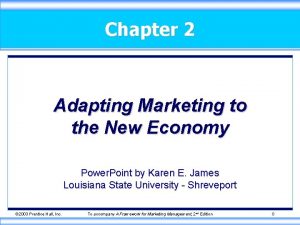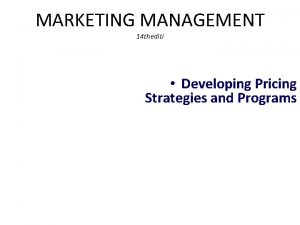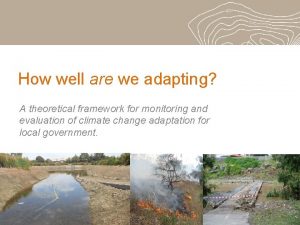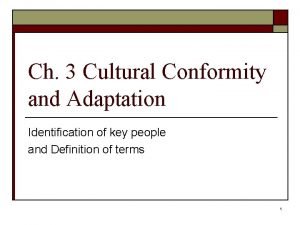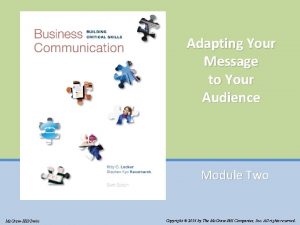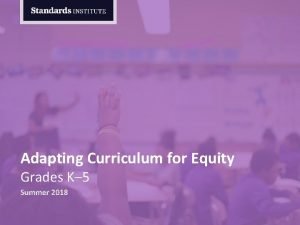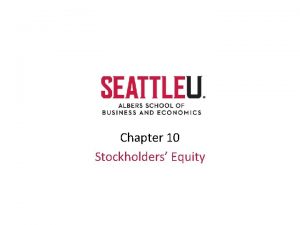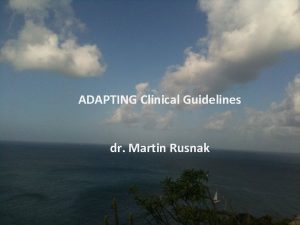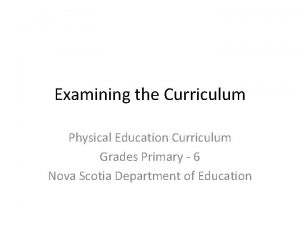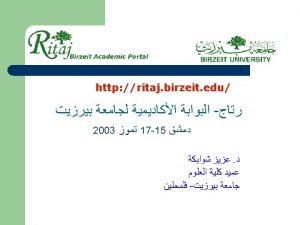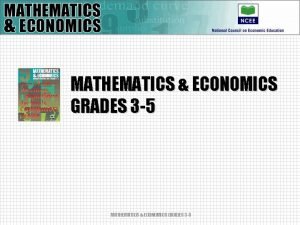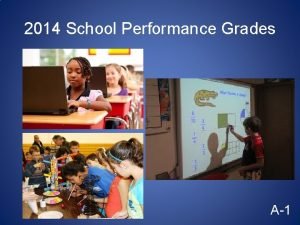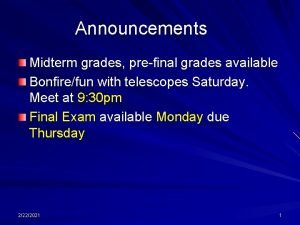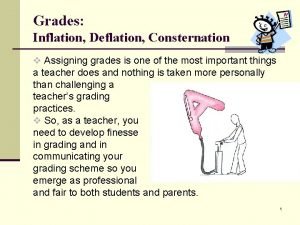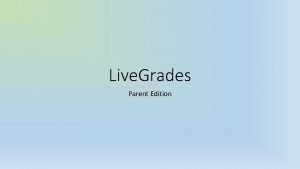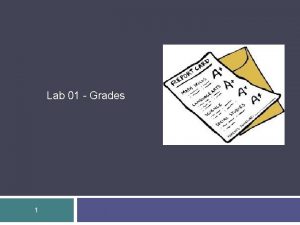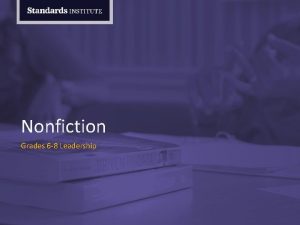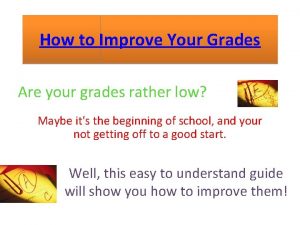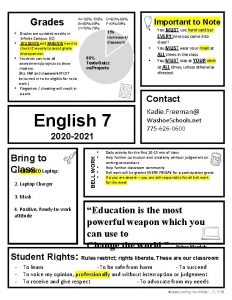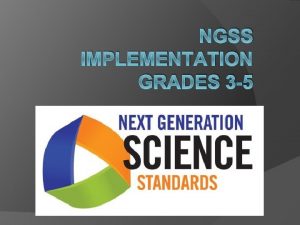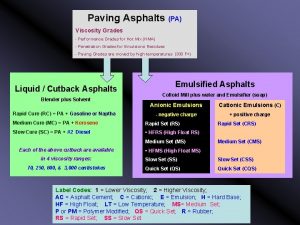Adapting Curriculum for Equity Grades 6 12 Summer
















































- Slides: 48

Adapting Curriculum for Equity Grades 6 -12 Summer 2018

ADAPTING CURRICULUM FOR EQUITY The Week at a Glance Day Monday 8: 30– 4: 30 Tuesday 8: 30– 4: 30 Wednesday 8: 30– 4: 30 Thursday 8: 30– 4: 30 Friday 8: 30– 2: 30 Ideas Focus on Language, Equity and Learners Standards Aligned Writing to Build Knowledge, Language and Vocabulary Adapting Curriculum for Equity The Intersection of Quality Math Tasks and Instruction Systems Thinking for Leaders Who Want Different Results

ADAPTING CURRICULUM FOR EQUITY Feedback on Feedback Plus Delta 3

ADAPTING CURRICULUM FOR EQUITY Objectives and Agenda Objective Participants will be able to: • use an English learners language development framework to provide access to the mathematics curriculum for ALL students • facilitate a curriculum adaptation planning method that intentionally addresses gaps in students’ learning Agenda I. Framing the Challenge II. Mathematical Language Routines III. Connecting to Prior Learning: The Shifts and Standards IV. Modeling Planning for Gaps V. Practice Planning for Gaps IV. Expand on Planning with Progressions 4

ADAPTING CURRICULUM FOR EQUITY Norms That Support Our Learning • Take responsibility for yourself as a learner. • Honor timeframes (start, end, activity). • Be an active and hands-on learner. • Use technology to enhance learning. • Strive for equity of voice. • Contribute to a learning environment where it is “safe to not know. ” • Identify and reframe deficit thinking and speaking. 5

ADAPTING CURRICULUM FOR EQUITY Share Your Learning Don’t forget to jot down ideas for • Light bulb moments • Why I teach/lead 9

ADAPTING CURRICULUM FOR EQUITY Access for English Learners is Access for ALL ”Communicating is essential to the learning of mathematics. …[F]rom the perspective of mathematics learning, by articulating the principles, concepts and rationale behind the steps of a particular problem solution, students have the opportunity to reinforce and deepen their understanding of higher-level knowledge structures in mathematics content” Ryve, 2004; Huang, Normandia & Greer, 2005, p. 45 What words or phrases are examples of equitable instructional practices? Which equity principles do they reflect? Are they fully evident in your math classrooms? If not, why not? 10

Language development and cognitive development are interrelated and mutually dependent (Walqui & Heritage, 2012) 11

Guiding Principles Students need well-structured opportunities to practice language to learn it. Amplify, do not simplify, language. Content and language develop inseparably and in integrated ways; language development occurs over time and in a nonlinear manner. Scaffold students toward independence with complex tasks; do not scaffold by simplifying text language and task complexity. We are the gatekeepers of language in the classroom as teachers and leaders. All students benefit from a systematic and comprehensive focus on language acquisition that helps them attain the masterful use of standard English in speaking and writing. All students bring valuable knowledge and culture to the classroom. 12

ADAPTING CURRICULUM FOR EQUITY Understanding Language SCALE Support Sense Making Optimize Output Four Design Principles Cultivate Conversation Maximize Linguistic and Cognitive Meta. Awareness 13

ADAPTING CURRICULUM FOR EQUITY Understanding Language SCALE As a group, create a poster with: Name the Principle Answer the questions: Ø What is the big idea of this Principle? Ø How does it support student linguistic and/or cognitive development? Ø How does this Principle support equity? 1) 2) 3) 4) Support Sense-Making – page 6 Optimize Output – page 6 -7 Cultivate Conversation – page 7 -8 Maximize Meta-Awareness – page 8 14

ADAPTING CURRICULUM FOR EQUITY Mathematical Language Routines MLR 1 – Stronger and Clearer Each Time MLR 2 – Collect and Display MLR 3 – Critique, Correct, and Clarify MLR 4 – Information Gap MLR 5 – Co-Craft Questions and Problems MLR 6 – Three Reads MLR 7 – Compare and Connect MLR 8 – Discussion Supports 15

ADAPTING CURRICULUM FOR EQUITY Sampling the MLRs Which one of these sequences seems different from the others? 0, 1. 5, 3, 4. 5, 6, 7. 5 6, 12, 24, 48, 96, 192 -9, -12, -15, -18, -21, -24 10, 15, 20, 25, 30, 35 16

ADAPTING CURRICULUM FOR EQUITY Sampling the MLRs: Denver to Chicago A plane flew at a constant speed between Denver and Chicago. It took the plane 1. 5 hours to fly 915 miles. 17

ADAPTING CURRICULUM FOR EQUITY Sampling the MLRs: Denver to Chicago A plane flew at a constant speed between Denver and Chicago. It took the plane 1. 5 hours to fly 915 miles. 1. Complete the table. 2. How far does the plane fly in one hour? 3. How far would the plane fly in t hours at this speed? 4. If d represents the distance that the plane flies at this speed for t hours, write an equation that relates t and d. 5. How far would the plane fly in 3 hours at this speed? in 3. 5 hours? Explain or show your reasoning. row 1 time (hours) distance (miles) speed (miles per hour) row 2 1 row 3 1. 5 915 row 4 2 row 5 2. 5 row 6 t 18

ADAPTING CURRICULUM FOR EQUITY Sampling the MLRs: Revisiting Bread Dough A bakery uses 8 tablespoons of honey for every 10 cups of flour to make bread dough. Some days they bake bigger batches and some days they bake smaller batches, but they always use the same ratio of honey to flour. 1. Complete the table. 2. If f is the cups of flour needed for h tablespoons of honey, write an equation that relates f and h. 3. How much flour is needed for 15 tablespoons of honey? 17 tablespoons? Explain or show your reasoning. Honey (tbsp) Flour (c) 1 8 10 16 30 h 19

Access for English learners is Access for ALL 20

ADAPTING CURRICULUM FOR EQUITY Three Corners Activator Choose the corner with the shift that most resonates with you. • Set context for your choice • What is your role in mathematics education? • Why does this shift resonate with you? • Discuss the shift as a group and chart answers to the questions: If you were teaching others about this shift, what points would you make? What does this shift mean with regard to the Standards? • Have a scribe write a definition. • In 1 min, one person will teach the shift and what it means with regard to the Standards to the rest of the room. 21

Focus, Coherence, and Rigor 30 30

Take a break…

ADAPTING CURRICULUM FOR EQUITY Planning for Gaps: Coherent Content in Context Equity is engaging in practices that meet students where they are and advances their learning by giving them what they need. It’s about fairness, not sameness. Standards-aligned Intervention » Identify the major work for the grade » Identify key pre-requisite standard » Design curricular intervention » Design performance task to assess pre-requisite standard 32

ADAPTING CURRICULUM FOR EQUITY Modeling Planning for Gaps: The Problem Lesson Objective: “Students model integer addition on the number line by using horizontal arrows; for example, an arrow for − 2 is a horizontal arrow of length 2 pointing in the negative direction. ” (7. NS. A. 1) Opening Problem: How does this problem relate to the expectations of 7. NS. A. 1? a) Suppose you received $10 from your grandmother for your birthday. You spent $4 on snacks. Using addition, how would you write an equation to represent this situation? b) How would you model your equation on a number line to show your answer? 33

ADAPTING CURRICULUM FOR EQUITY Modeling Planning for Gaps: The Problem • Turn and Talk: What are some of the prerequisite standards students need to be successful on the opening problem? How did you track them down? • Discuss in your group; table leaders will share out big ideas. 34

ADAPTING CURRICULUM FOR EQUITY Modeling Planning for Gaps: Prerequisites 5. NF. A. 1 Add and subtract fractions with unlike denominators (including mixed numbers) by replacing given fractions with equivalent fractions in such a way as to produce an equivalent sum or difference of fractions with like denominators. For example, 2/3 + 5/4 = 8/12 + 15/12 = 23/12. (In general, a/b + c/d = (ad + bc)/bd. ) 6. NS. C. 5 Understand that positive and negative numbers are used together to describe quantities having opposite directions or values (e. g. , temperature above/below zero, elevation above/below sea level, credits/debits, positive/negative electric charge); use positive and negative numbers to represent quantities in real-world contexts, explaining the meaning of 0 in each situation. 6. NS. C. 6 Understand a rational number as a point on the number line. Extend number line diagrams and coordinate axes familiar from previous grades to represent points on the line and in the plane with negative number coordinates. 6. NS. C. 6. A Recognize opposite signs of numbers as indicating locations on opposite sides of 0 on the number line; recognize that the opposite of a number is the number itself, e. g. , -(-3) = 3, and that 0 is its own opposite. 6. NS. C. 6. B Understand signs of numbers in ordered pairs as indicating locations in quadrants of the coordinate plane; recognize that when two ordered pairs differ only by signs, the locations of the points are related by reflections across one or both axes. 6. NS. C. 6. C Find and position integers and other rational numbers on a horizontal or vertical number line diagram; find and position pairs of integers and other rational numbers on a coordinate plane. 35

ADAPTING CURRICULUM FOR EQUITY Curricular Interventions Using Coherent Content in Context • Coherent in the progression of grade -level learning • Focused on current grade level content • Relatively quick 36

ADAPTING CURRICULUM FOR EQUITY Modeling Planning for Gaps: Curricular Interventions Using 3 Cs Turn and Talk: • • Do you like this plan, why? Is this always the best approach to this kind of problem? What are other options and what are benefits and risks to doing them? What other types of interventions you could plan for? 7 7 7 37

Modeling Planning for Gaps: Curricular Interventions Using Coherent Content in Context 40

ADAPTING CURRICULUM FOR EQUITY Modeling Planning for Gaps: Using the Content Guides 41

ADAPTING CURRICULUM FOR EQUITY Modeling Planning for Gaps: Using the Content Guides Skim Part III to get a feel for it. How is it structured? At Your Table: • Divide up the progressions in your guide and create a poster for each progression. We’ll use these as anchor charts. • When you’re done, take a few minutes to explain the progressions to your table mates. 42

ADAPTING CURRICULUM FOR EQUITY Modeling Planning for Gaps: Mapping It All Out How can we plan for this in a focused manner? Assessment Approach Prerequisite Skills Curricular Intervention X [STANDARDS] / [KNOWLEDGE] / [SKILLS] [TYPE] + [RESOURCE] X 6. NS. C. 6: Structure of the number line, “opposite value” of positive and negative integers X ? Teach 2 full lessons on the number line and real -world integer situations using Engage. NY G 6 M 3 L 1 -2 ? 43

ADAPTING CURRICULUM FOR EQUITY Reflection 1. What are your takeaways from this session? 2. How do the content guides affect your practice as a leader or a coach in planning for students with unfinished learning? In particular, consider the role the progressions play in intervention planning. 3. How is this kind of planning for students with unfinished learning an equity move? 4. What further questions do you have? What further resources do you want? 44

ADAPTING CURRICULUM FOR EQUITY Thumb Rating: are we on track? Objectives: • use an English learners language development framework to provide access to the mathematics curriculum for ALL students • facilitate a curriculum adaptation planning method that intentionally addresses gaps in students’ learning

Lunch Break!

Welcome Back! 47

ADAPTING CURRICULUM FOR EQUITY Objectives and Agenda Objective Participants will be able to: • use an English learners language development framework to provide access to the mathematics curriculum for ALL students • facilitate a curriculum adaptation planning method that intentionally addresses gaps in students’ learning Agenda I. Framing the Challenge II. Mathematical Language Routines III. Connecting to Prior Learning: The Shifts and Standards IV. Modeling Planning for Gaps V. Practice Planning for Gaps IV. Expand on Planning with Progressions 48

ADAPTING CURRICULUM FOR EQUITY Practice Planning for Gaps Assessment Approach Prerequisite Skills Curricular Intervention ? ? For the following, fill out the “pre-requisite skills” and “curricular intervention” columns with two rows for your grade level. Be prepared to share out! Grade 7: 7. RP. A. 2 Algebra I: N-Q. A. 1 Grade 8: 8. G. A. 1 Geometry: G. CO. C. 10 49

ADAPTING CURRICULUM FOR EQUITY Reflection 1. What are your takeaways from this session? 2. How do the content guides affect your practice as a leader or a coach in planning for students with unfinished learning? In particular, consider the role the progressions play in intervention planning. 3. How is this kind of planning for students with unfinished learning an equity move? 4. What further questions do you have? What further resources do you want? 50

Break

Completing the Puzzle… 52

ADAPTING CURRICULUM FOR EQUITY Expanding on Planning with Progressions: A Change in Practice? 1. Choose a lesson from your unit and note the expectations of the focus standard(s). 2. Use the Content Guides, Coherence Map, or other resources to determine prerequisite skill(s). 3. Determine your curricular interventions. 4. Determine what approach(es) you will take to determine whether or not students have those skill(s). Consider the tool and the timing. 53

ADAPTING CURRICULUM FOR EQUITY Expanding on Planning with Progressions: A Change in Practice? Determine what approach(es) you will take to determine whether or not students have those skill(s). Consider the tool and the timing. • Exit ticket from Engage. NY aligned to those standards given one week before, to allow for planning. • Add additional problem(s) into class work a day or two before. • “Mini-quiz” given at beginning of unit. • Observation during another unit previously in the year. • Assessment data from previous year or beginning-of-year benchmark data. 54

ADAPTING CURRICULUM FOR EQUITY Expanding on Planning with Progressions: A Change in Practice? Building on our process from this morning… Assessment Approach Prerequisite Skills Curricular Intervention [TOOL] + [TIME] [STANDARDS] / [KNOWLEDGE] / [SKILLS] [TYPE] + [RESOURCE] Give exit slip (modified from G 6 M 3 L 1 -2 exit slips) at end of class Friday before G 7 M 2 begins 6. NS. C. 6: Structure of the number line, “opposite value” of positive and negative integers Teach 2 full lessons on the number line and real-world integer situations using Engage. NY G 6 M 3 L 1 -2 55

ADAPTING CURRICULUM FOR EQUITY Expanding on Planning with Progressions: Practice Lesson Objectives Assessment Approach Based on Content Guide, Prerequisite Skills Pre-Requisite Skills [STANDARDS] / [KNOWLEDGE] / [SKILLS] [TOOL] + [TIME] … Intervention … Assessment Approach Intervention [TYPE] + [RESOURCE] … 56

ADAPTING CURRICULUM FOR EQUITY Reflection: Gallery Walk & Discussion Discuss: 1. What did you learn from engaging in this planning process? 2. Write down a description of the current state of your organization, school, or district with intentional planning for equity in mathematics. 3. List the necessary next steps to making change based on your role and/or sphere of influence. This is also based on today’s learning. 4. Identify leadership moves that you will make to move this work forward. 57

ADAPTING CURRICULUM FOR EQUITY Thumb Rating: Did we meet our objectives? Objectives: Are you now able to… • use an English learners language development framework to provide access to the mathematics curriculum for ALL students • facilitate a curriculum adaptation planning method that intentionally addresses gaps in students’ learning

Feedback Please fill out the survey located here: www. standardsinstitutes. org • Click “Explore the Agenda” on the top of the page. • Click “Details” on the center of the page. 49 59

About this Deck • Copyright © 2018 Unbound. Ed Learning, Inc. • This work is licensed under a Creative Commons Attribution Non. Commerical Share. Alike 4. 0 International License. • Unbound. Ed Learning, Inc. is the copyright holder of the images and content, except where otherwise indicated in the slide notes. • More information on Creative Commons’ licenses can be found here: https: //creativecommons. org/licenses/ 49 60

How You Can Use this Deck The materials that we create, unless otherwise cited in the slide notes, are licensed under the Creative Commons Attribution-Non. Commercial-Share. Alike 4. 0 International license (CC BY-NC-SA 4. 0). This means you may: • Share — copy and redistribute the material in any medium or format • Adapt — remix, transform, and build upon the material As long as you follow the license terms: • Provide Attribution — You must give appropriate credit, provide a link to the license, and indicate if changes were made. You may do so in any reasonable manner, but not in any way that suggests that Unbound. Ed or any third party creator endorses you or your use. • No Commercial Use — You may not use the material for commercial purposes • Share. Alike — If you remix, transform, or build upon the material, you must distribute your contributions under the same license as the original. • Add no additional restrictions — You may not apply legal terms or technological measures that legally restrict others from doing anything the license permits. 49 61
 Adapting curriculum to bridge equity gaps
Adapting curriculum to bridge equity gaps Adapting to your audience
Adapting to your audience Adapting marketing to the new economy
Adapting marketing to the new economy Adapting the price
Adapting the price How well are we adapting
How well are we adapting Adopting materials
Adopting materials The process of adapting borrowed cultural traits.
The process of adapting borrowed cultural traits. Paiboc model
Paiboc model Adapting the price
Adapting the price How well are we adapting
How well are we adapting Adapting to challenges of the micro environment
Adapting to challenges of the micro environment Kassaregister ideell förening
Kassaregister ideell förening Toppslätskivling dos
Toppslätskivling dos Borra hål för knoppar
Borra hål för knoppar Bris för vuxna
Bris för vuxna Mat för idrottare
Mat för idrottare Vad är ett minoritetsspråk
Vad är ett minoritetsspråk Ledarskapsteorier
Ledarskapsteorier Offentlig förvaltning
Offentlig förvaltning Datorkunskap för nybörjare
Datorkunskap för nybörjare Antikt plagg i rom
Antikt plagg i rom Indikation för kejsarsnitt på moderns önskan
Indikation för kejsarsnitt på moderns önskan Rita perspektiv
Rita perspektiv Redogör för vad psykologi är
Redogör för vad psykologi är Ministerstyre för och nackdelar
Ministerstyre för och nackdelar Tillitsbaserad ledning
Tillitsbaserad ledning Geometriska former i förskolan
Geometriska former i förskolan Nationell inriktning för artificiell intelligens
Nationell inriktning för artificiell intelligens Bästa kameran för astrofoto
Bästa kameran för astrofoto Dikt med rim
Dikt med rim Nyckelkompetenser för livslångt lärande
Nyckelkompetenser för livslångt lärande Vilotidsbok
Vilotidsbok Mästare lärling modell
Mästare lärling modell Orubbliga rättigheter
Orubbliga rättigheter Big brother rösta
Big brother rösta Verktyg för automatisering av utbetalningar
Verktyg för automatisering av utbetalningar Urban torhamn
Urban torhamn Kanaans land
Kanaans land Hur stor skarns är det för ett barn att få cancer
Hur stor skarns är det för ett barn att få cancer Stig kerman
Stig kerman Romarriket tidslinje
Romarriket tidslinje Shingelfrisyren
Shingelfrisyren Informationskartläggning
Informationskartläggning Tack för att ni har lyssnat
Tack för att ni har lyssnat Stål för stötfångarsystem
Stål för stötfångarsystem Cks
Cks Läkarutlåtande för livränta
Läkarutlåtande för livränta Vishnuiter
Vishnuiter Returpilarna
Returpilarna


